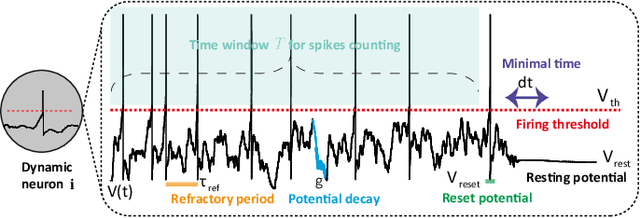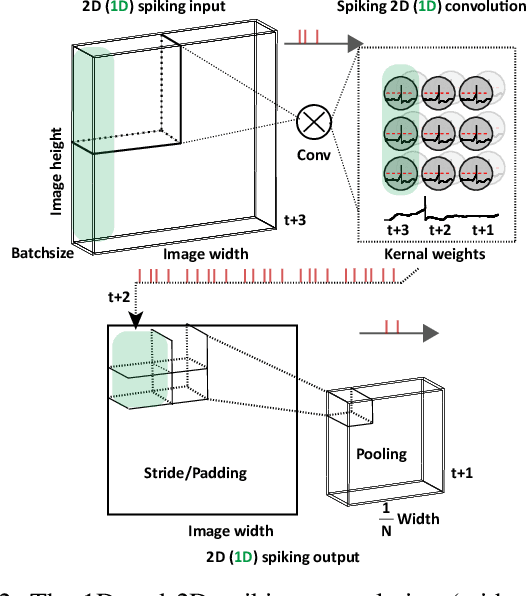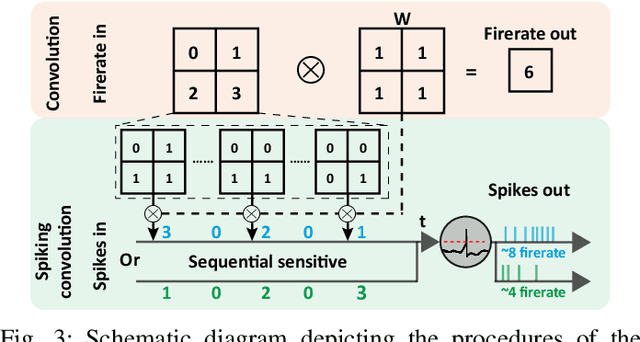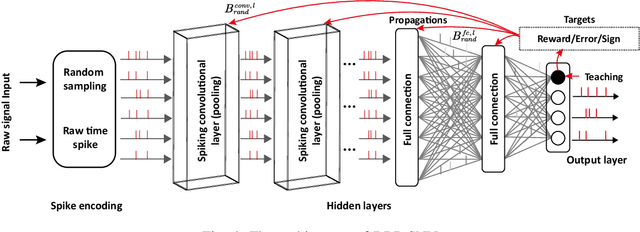Tuning Convolutional Spiking Neural Network with Biologically-plausible Reward Propagation
Paper and Code
Oct 09, 2020



Spiking Neural Networks (SNNs) contain more biology-realistic structures and biology-inspired learning principles compared with that in standard Artificial Neural Networks (ANNs). The dynamic neurons in SNNs are non-differential, containing decayed historical states and generating event-based spikes after their states reaching the firing threshold. This dynamic characteristic of SNNs made it hard to be directly trained with standard back propagation (BP) which is considered not biologically plausible. In this paper, a Biologically-plausible Reward Propagation (BRP) algorithm is proposed and applied on a SNN architecture with both spiking-convolution (with both 1D and 2D convolutional kernels) and full-connection layers. Different with standard BP that propagated the error signals from post to pre synaptic neurons layer by layer, the BRP propagated the target labels instead of target errors directly from the output layer to all of the pre hidden layers. This effort was more consistent with the top-down reward-guiding learning in cortical columns of the neocortex. Then synaptic modifications with only local gradient differences were induced with pseudo-BP that might also be replaced with Spike-Timing Dependent Plasticity (STDP). The performance of the proposed BRP-SNN was further verified on spatial (including MNIST and Cifar-10) and temporal (including TIDigits and DvsGesture) tasks. The experimental result showed that the BRP played roles on convergent learning of SNN, reached higher accuracy compared with other state-of-the-art SNN algorithms, and saved more than 50% computational cost compared with that on ANNs. We think the introduction of biologically-plausible learning rules to the training procedure of biologically-realistic SNNs might give us more hints and inspirations towards a better understanding of the intelligent nature of the biological system.
 Add to Chrome
Add to Chrome Add to Firefox
Add to Firefox Add to Edge
Add to Edge